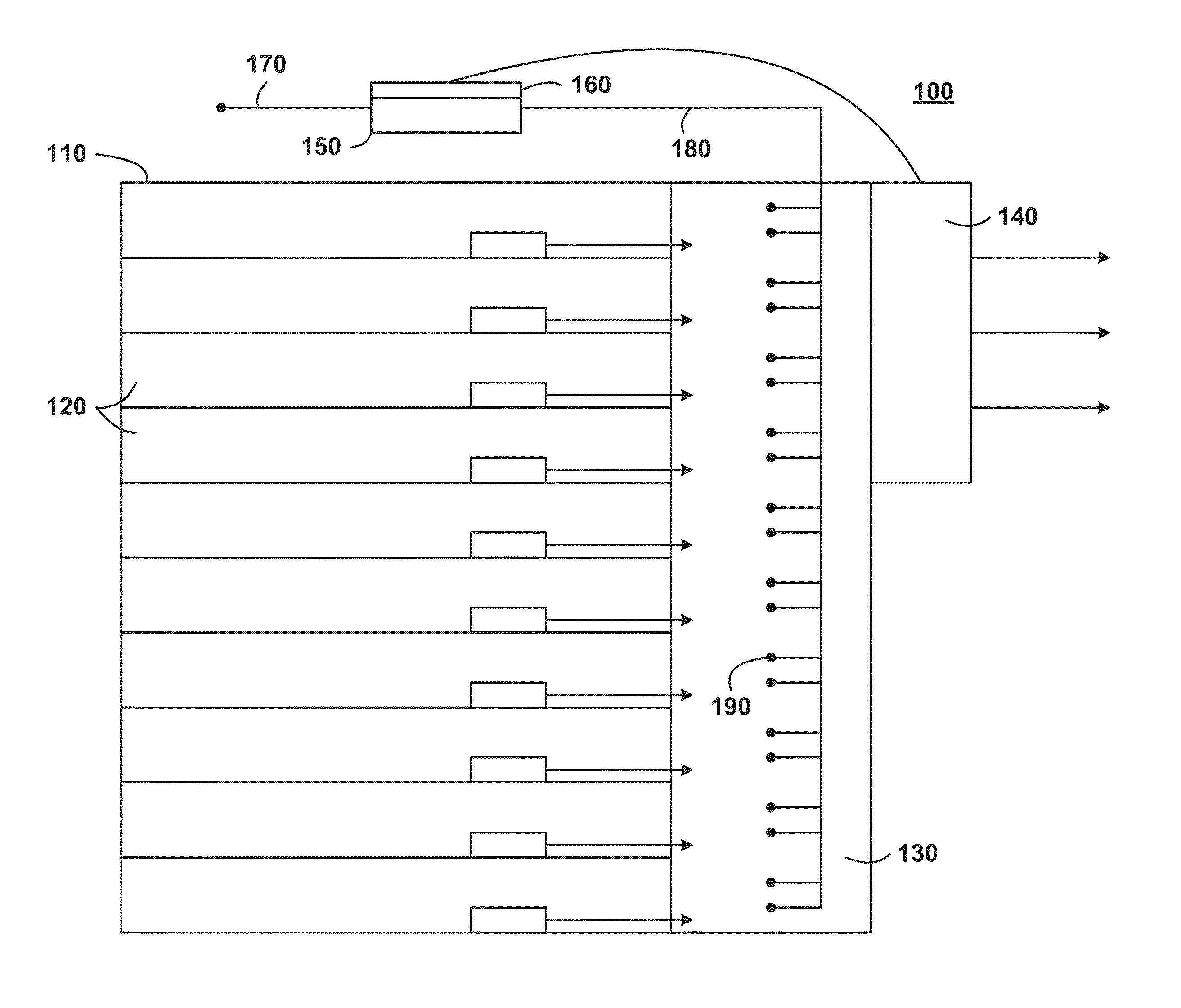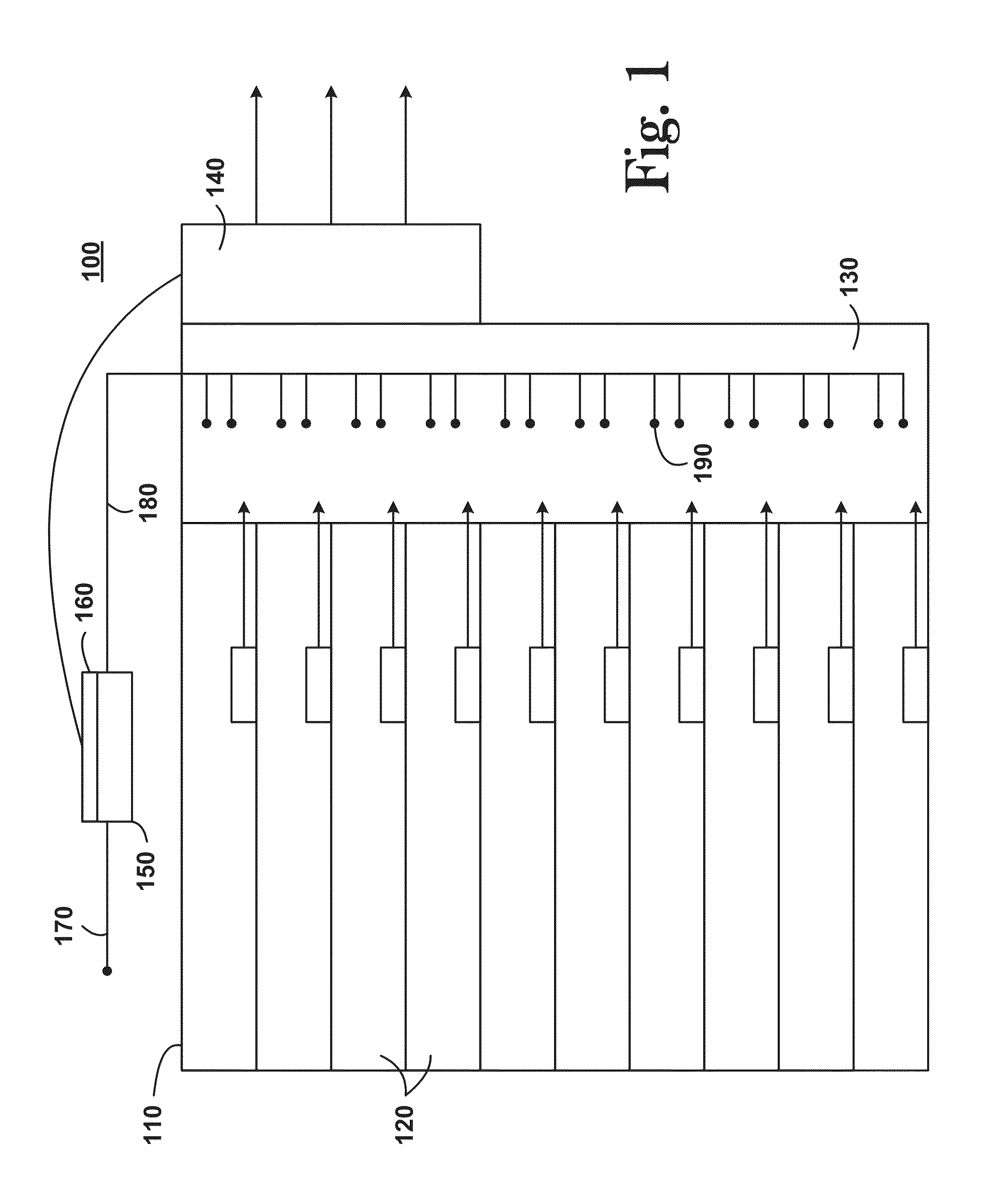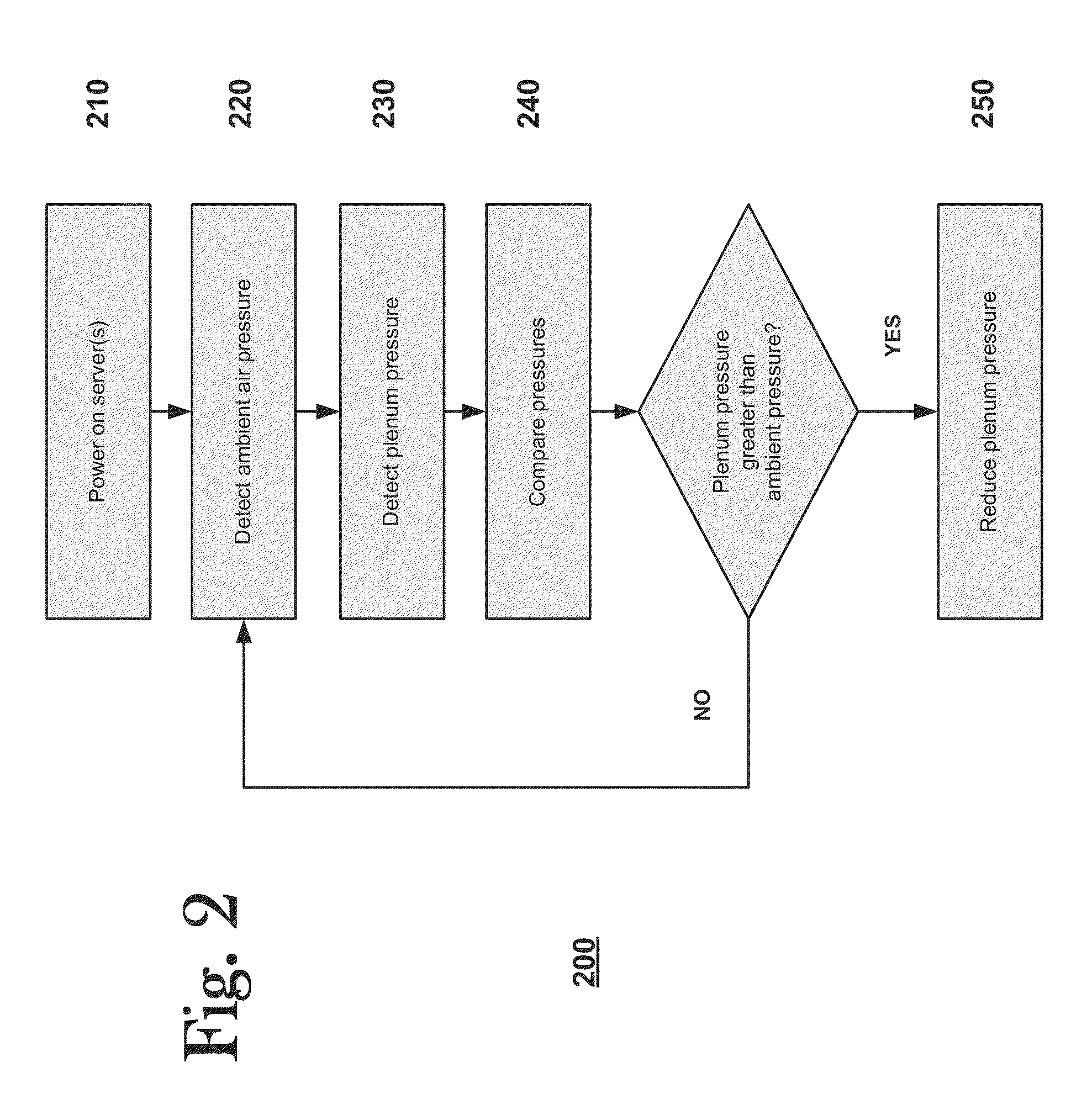Pressure-activated server cooling system
a server cooling and pressure-activated technology, applied in the field of servers, can solve the problems of insufficient passively reducing the build-up of heat and pressure within the rack, requiring impractical amounts of power, and unable to control the rack fans, so as to reduce the threat of overheating, reduce the risk of overheating, and mitigate the detrimental flow impedance
- Summary
- Abstract
- Description
- Claims
- Application Information
AI Technical Summary
Benefits of technology
Problems solved by technology
Method used
Image
Examples
Embodiment Construction
[0020]A pressure-activated server cooling system is provided. The system automatically mitigates flow impedances that naturally build up in server racks. The system does so by detecting and responding to the presence of excess air pressure in the space adjacent to the server outlet vents. The system reduces the pressure in a controlled fashion that allows for energy efficient cooling that does not depend on error-prone temperature readings. Because it is controlled, the system also avoids drawing excess cool air through the servers that would otherwise drop the ΔT rating of the system to a level that customers may deem unacceptable.
[0021]Additionally, because the system is pressure-activated and does not depend on temperature readings, it can be optimized regardless of the ambient temperature present at any given time. By reducing the threat of overheating caused by flow impedances within server racks, the system may also allow data management companies to add more components to the...
PUM
 Login to View More
Login to View More Abstract
Description
Claims
Application Information
 Login to View More
Login to View More - R&D
- Intellectual Property
- Life Sciences
- Materials
- Tech Scout
- Unparalleled Data Quality
- Higher Quality Content
- 60% Fewer Hallucinations
Browse by: Latest US Patents, China's latest patents, Technical Efficacy Thesaurus, Application Domain, Technology Topic, Popular Technical Reports.
© 2025 PatSnap. All rights reserved.Legal|Privacy policy|Modern Slavery Act Transparency Statement|Sitemap|About US| Contact US: help@patsnap.com



